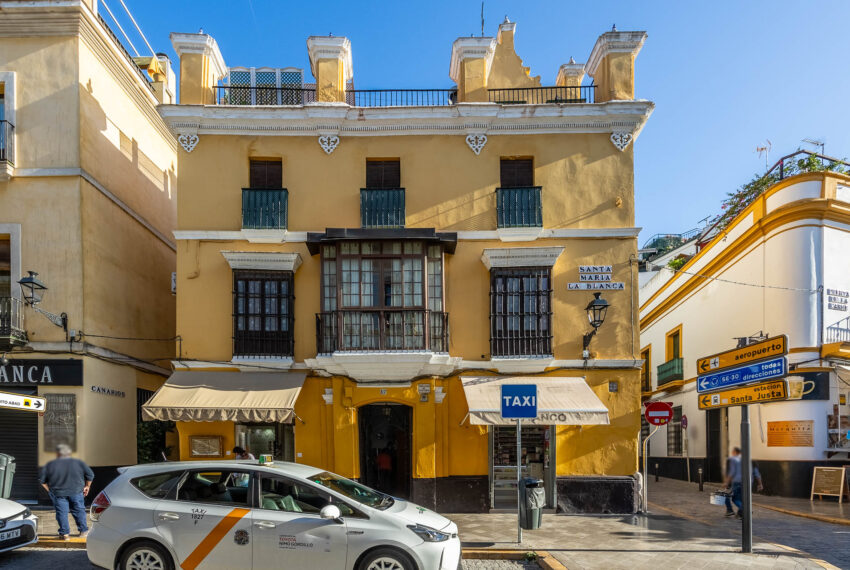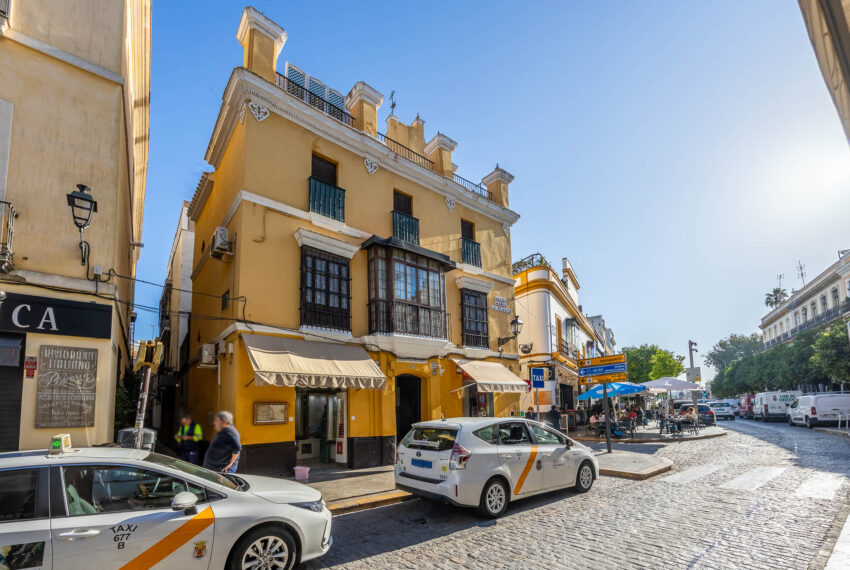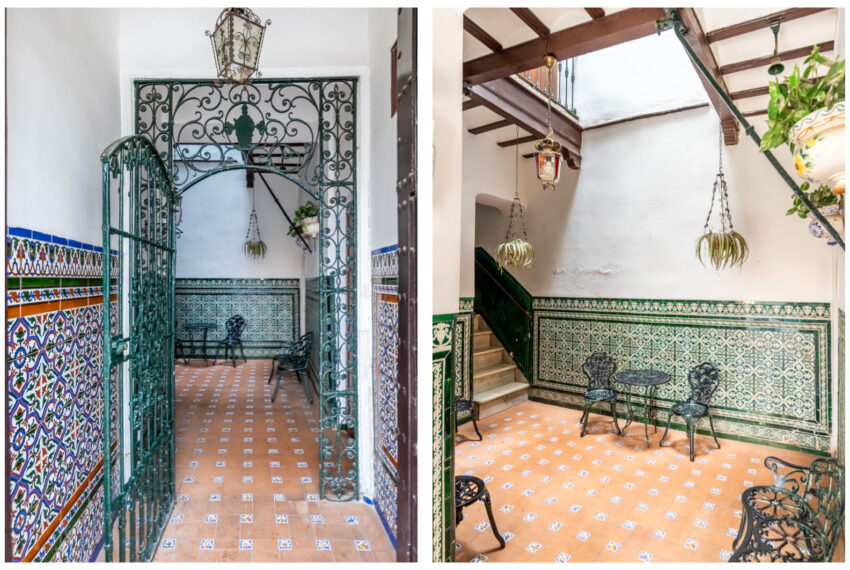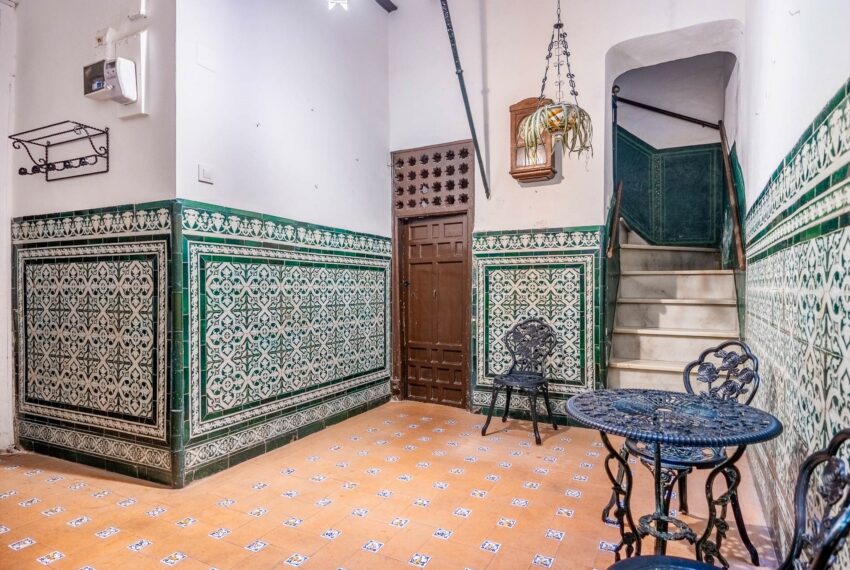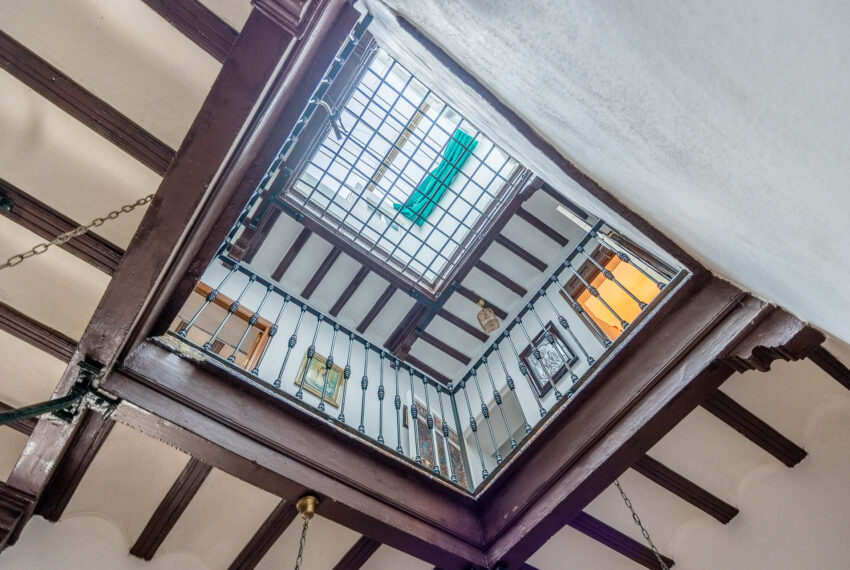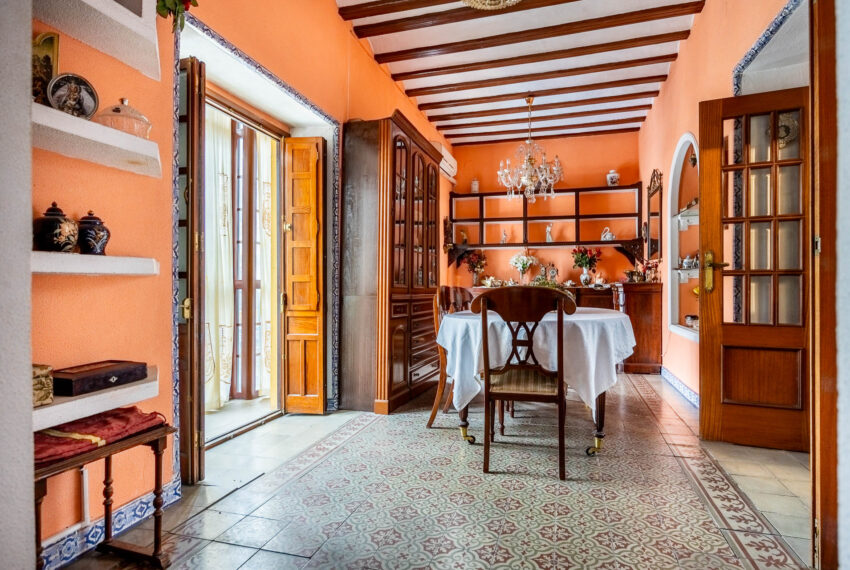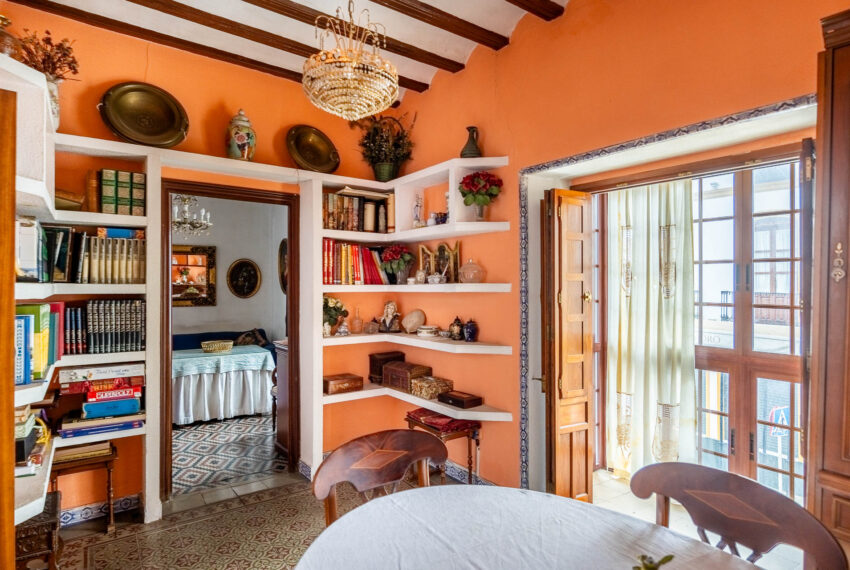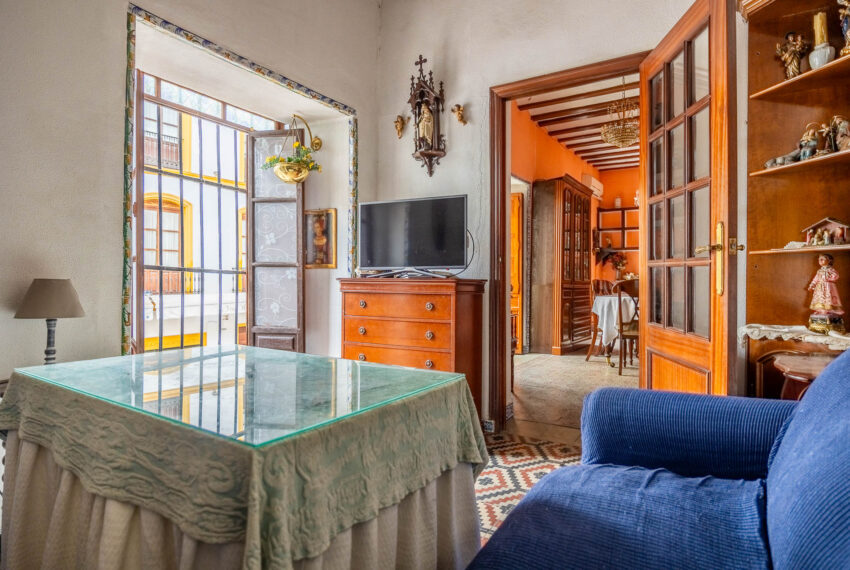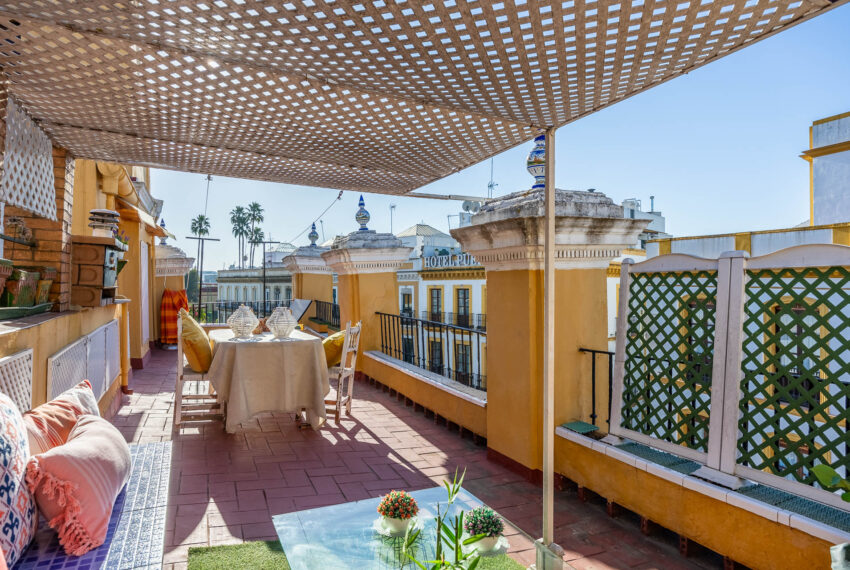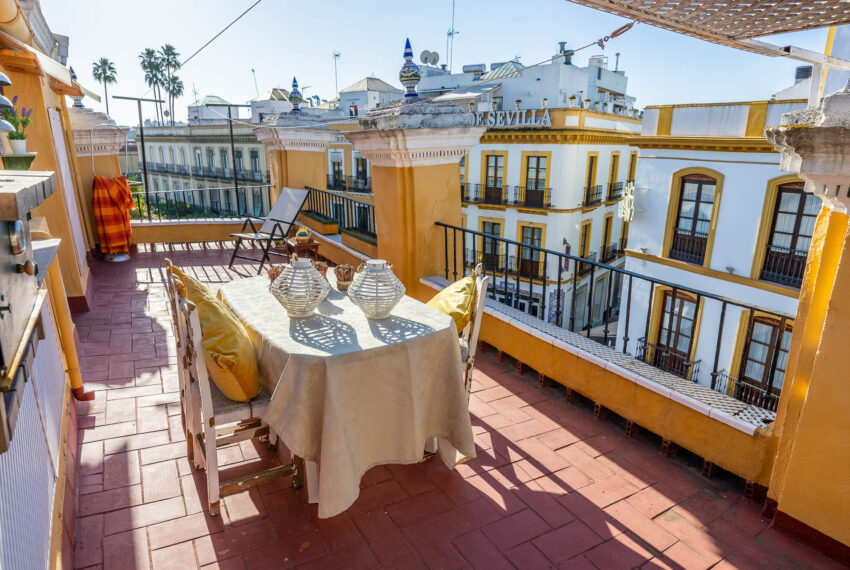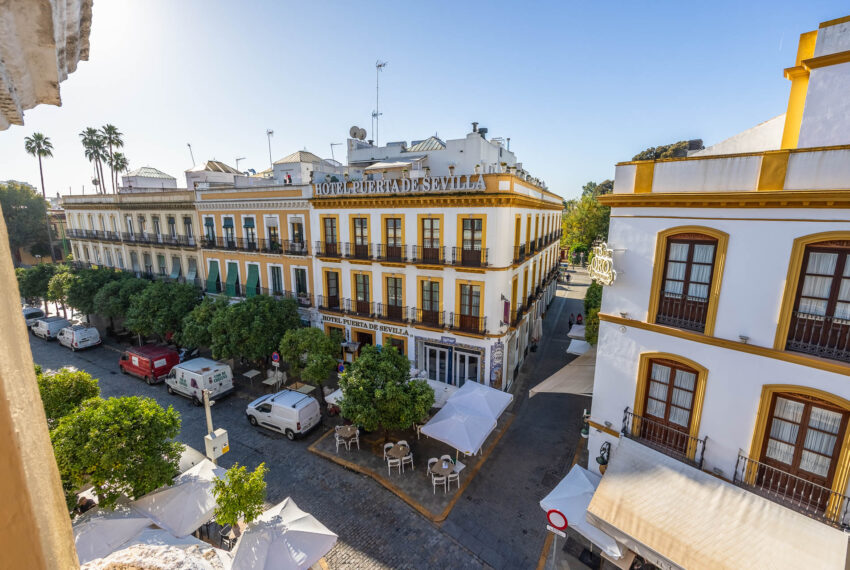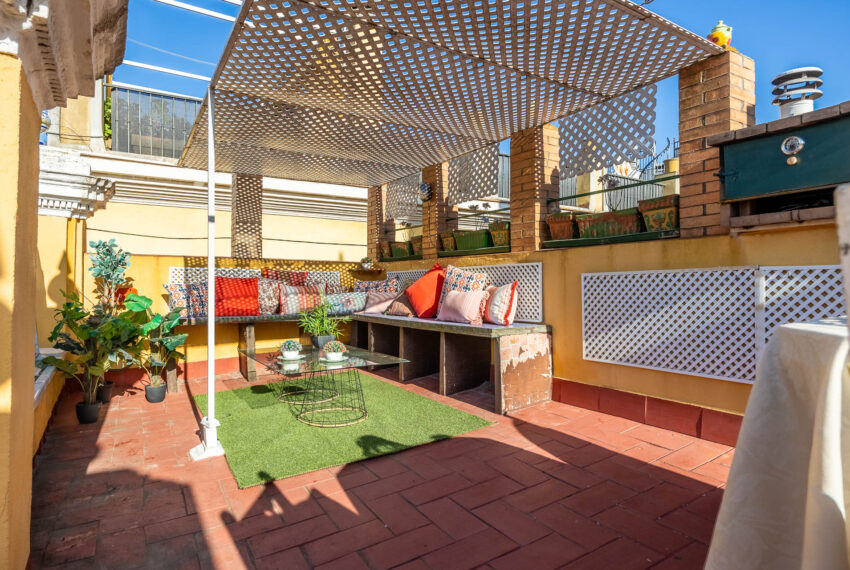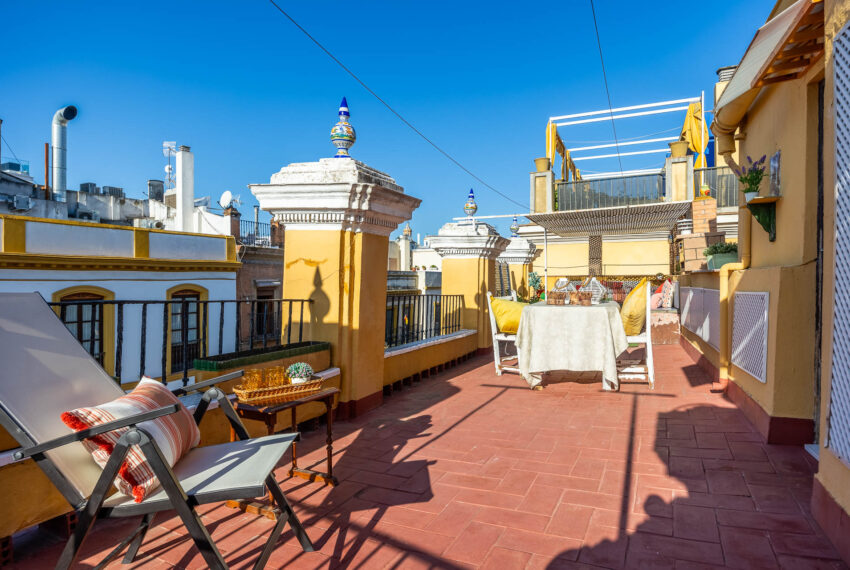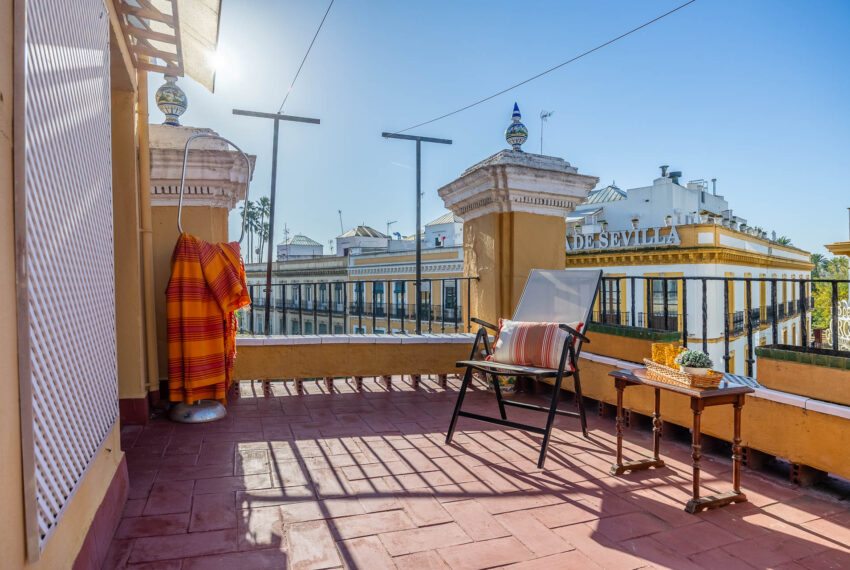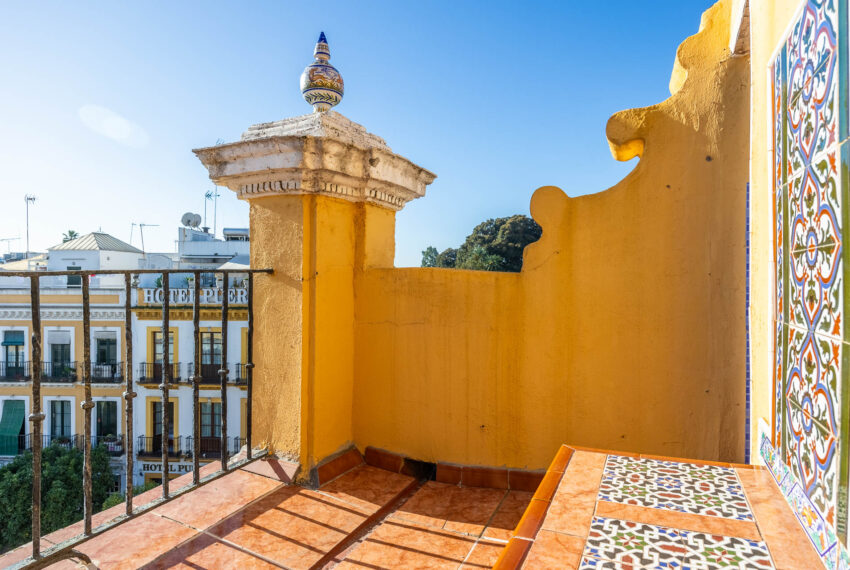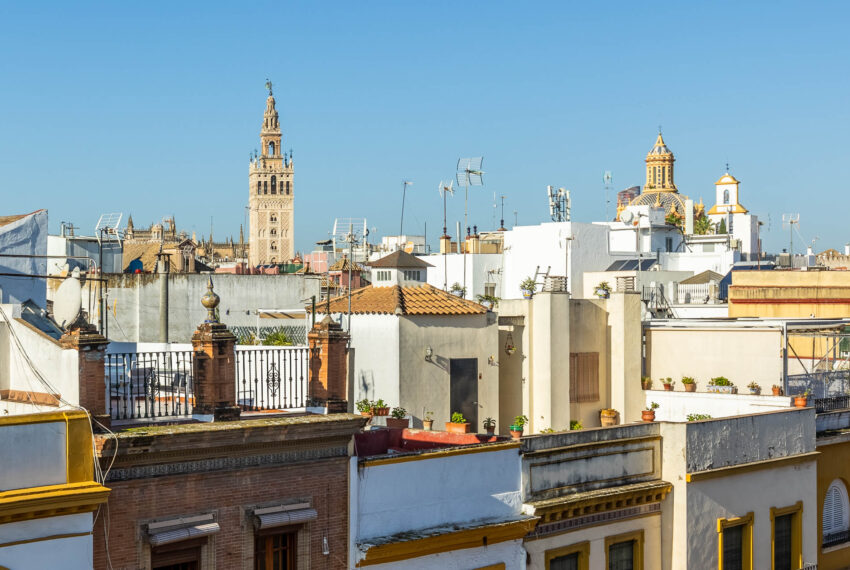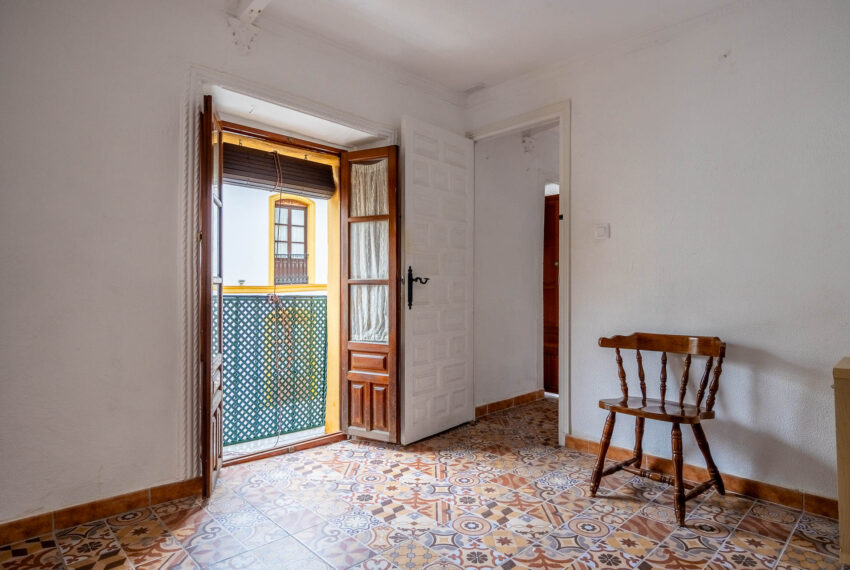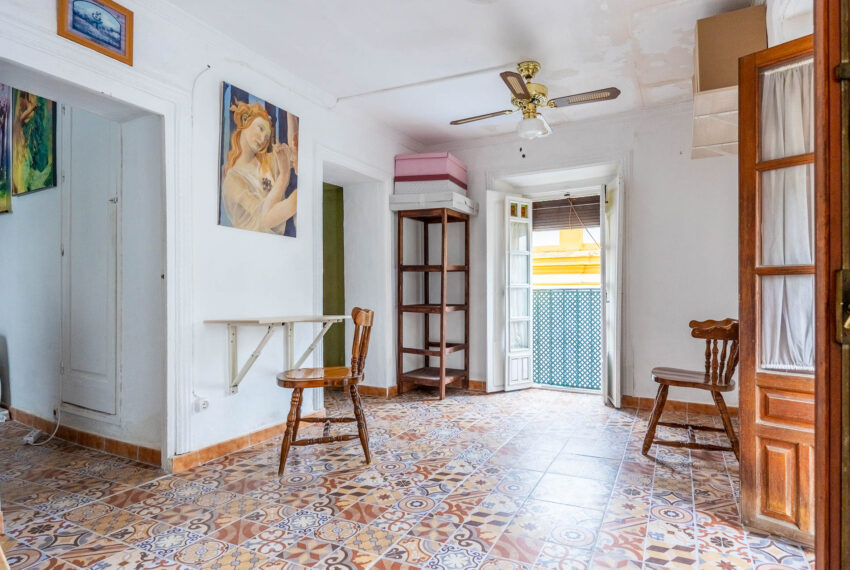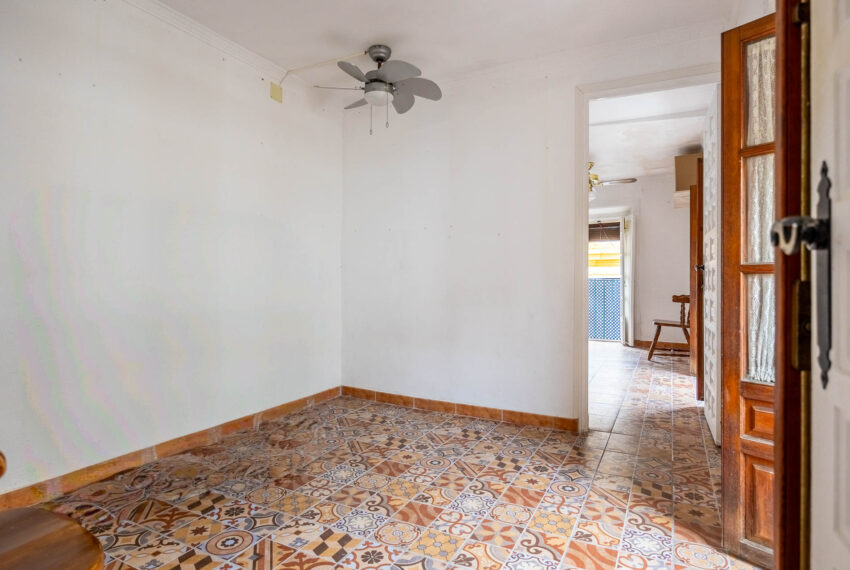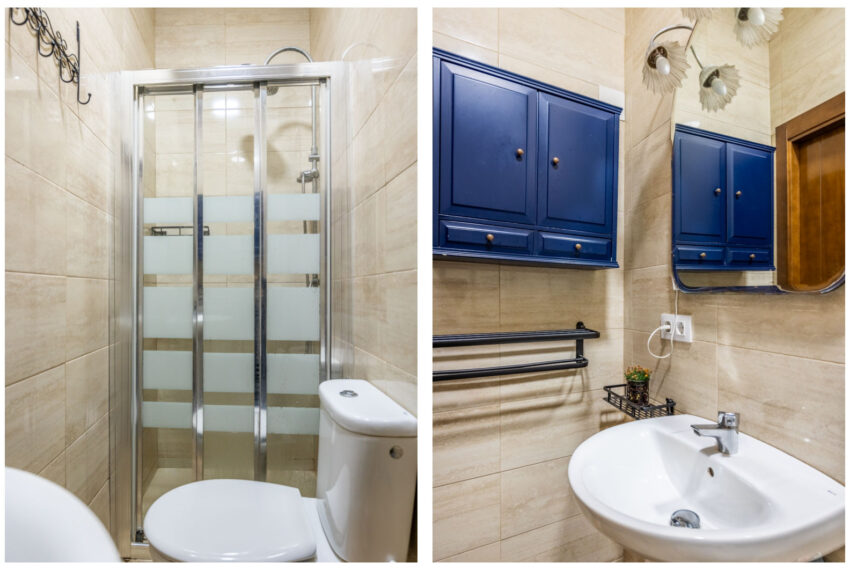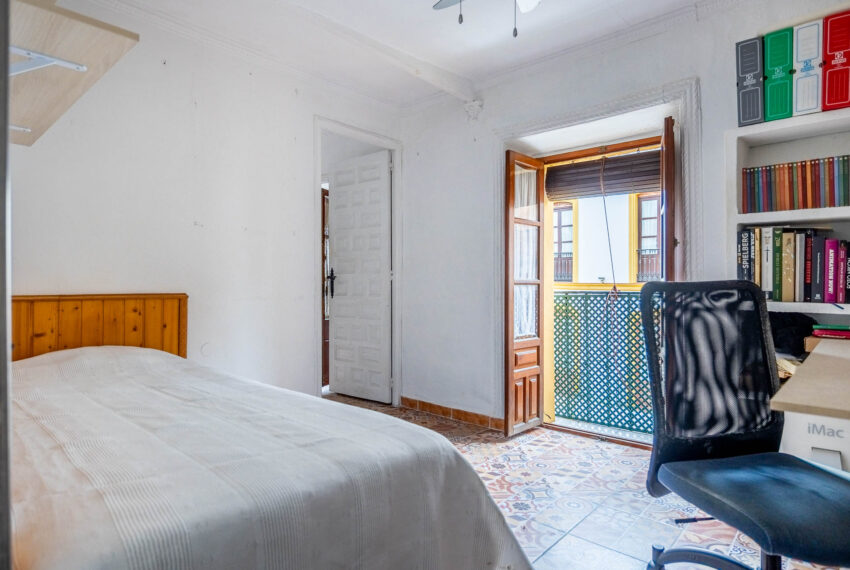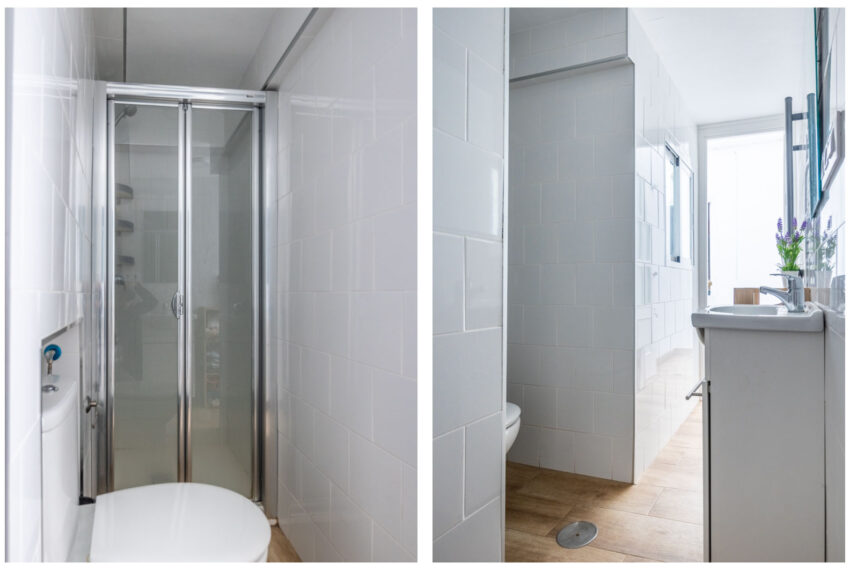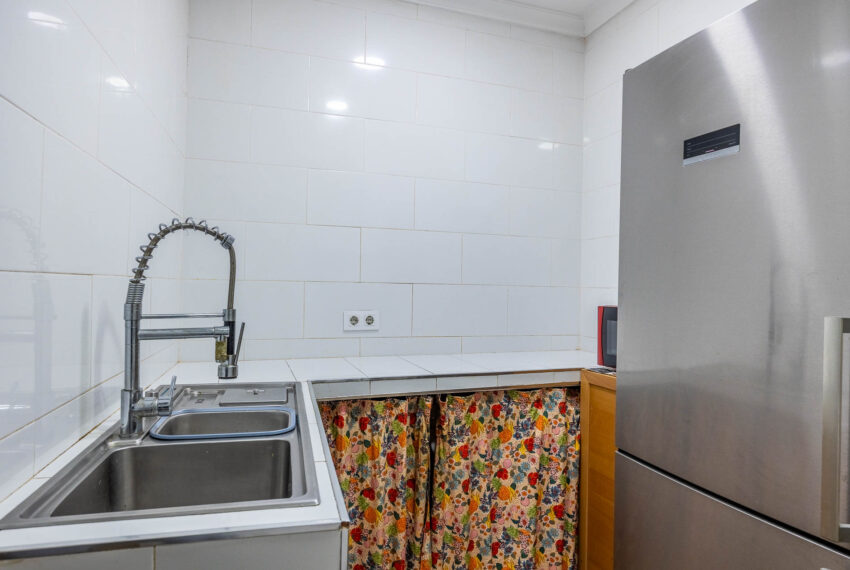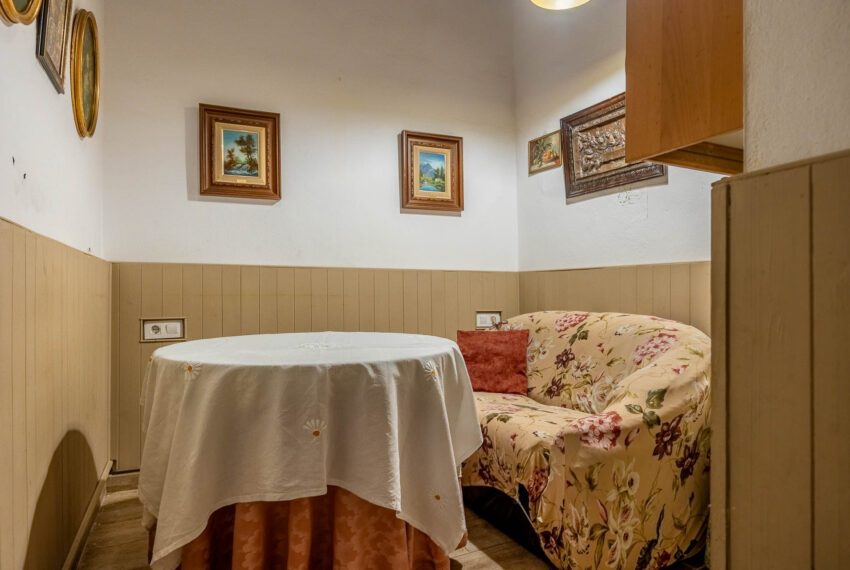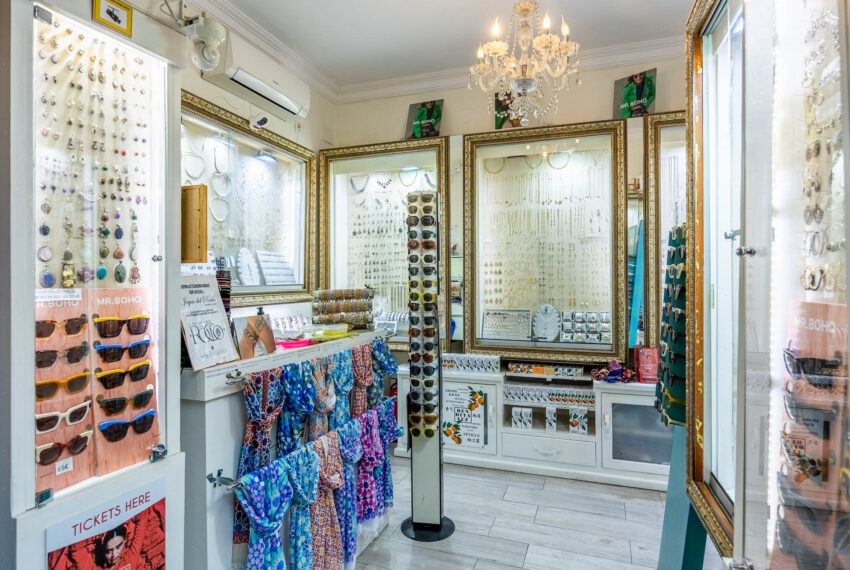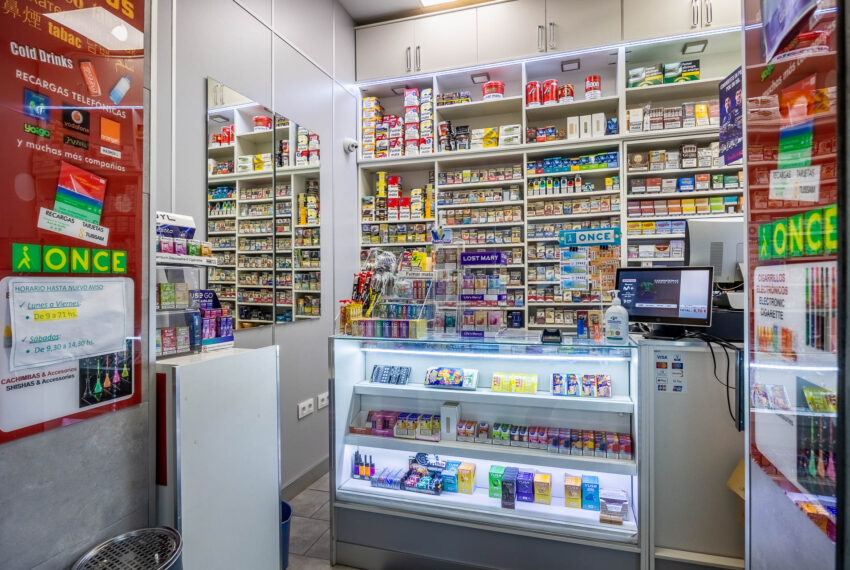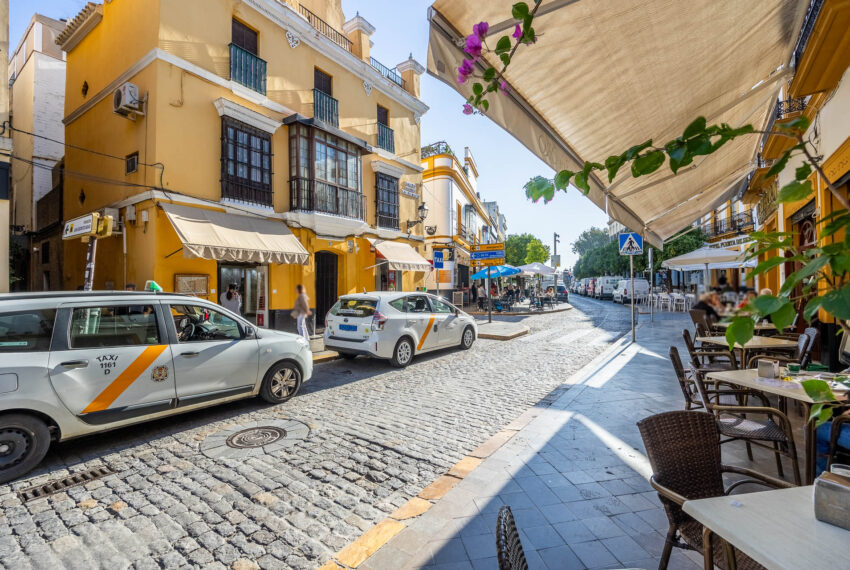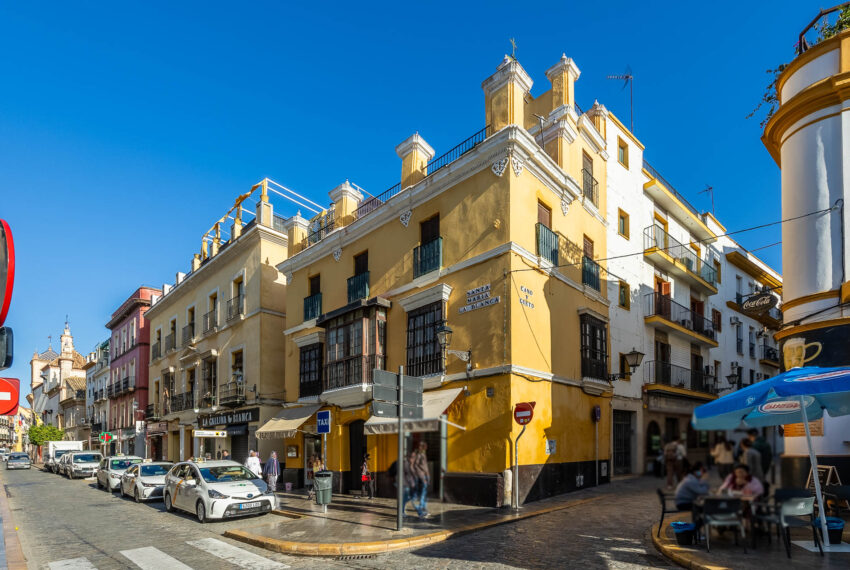Description
This is one of the most unique houses in Seville.
It is located at 17 Santa María la Blanca street, next to the old Puerta de la Carne, and on the corner of Cano y Cueto street and Calle de los Canarios.
Its location is emblematic, at the confluence of the two most touristic neighborhoods of Seville, Santa Cruz and La Judería.
The house has a large and beautiful façade, with a central entrance and two small commercial premises on the sides, four windows with closures on the first floor, five windows with a balcony on the second floor and four pilasters with a ceramic finish that support the iron railing. from the splendid terrace located on the third floor, from which you can access the unique “armchair” viewpoint.
The distribution by floor is as follows:
On the ground floor, a hallway with an entrance gate and an old wrought iron gate without rivets: a patio with a blind, a bathroom with a shower, a kitchen with a living room and a pantry under the stairs.
On the first floor, living room, adjoining living room and bedroom with dressing room (currently office). This floor does not have a bathroom.
On the second floor, three adjoining bedrooms, a closet room and a bathroom.
On the third floor, a castle with a small workshop, a large solarium terrace, a laundry room and a storage room. From the workshop you can access the chair viewing platform on a higher level, from which you can enjoy excellent views.
Wide walls, hydraulic floors, high ceilings. The electrical and plumbing installation was renovated in 2019.
The two commercial premises, a tobacco shop and a jewelry store, belong to the house and are currently rented.
History. There is evidence of the existence of this house in the year 1503 (Provincial Historical Archive of Seville).
We must highlight the “armchair” viewpoint, so called because of its shape, a unique architectural piece, one of the three that are preserved in Seville.
This viewpoint, surpassing in height the wall of the Puerta de la Carne, allowed a view of the nearby orchards and the slaughterhouse, from where the necessary supplies came to the city. In the weather vane that tops the viewpoint you can see the holes produced by soldiers’ shots from a nearby barracks, during the Spanish Civil War.
The construction of the viewpoint on the existing house dates back to the end of the 18th century or the beginning of the 19th century, and its construction can be identified in the note made by Richard Ford between the years 1830 and 1832. (Source: The viewpoint on Cano y Cueto Street in Seville. Joaquín González Moreno. Archivo Hispalense, no. 253.)


